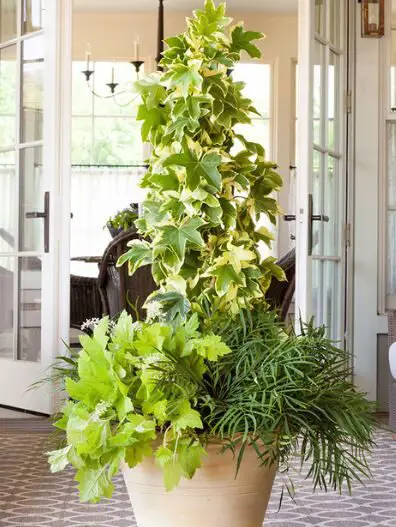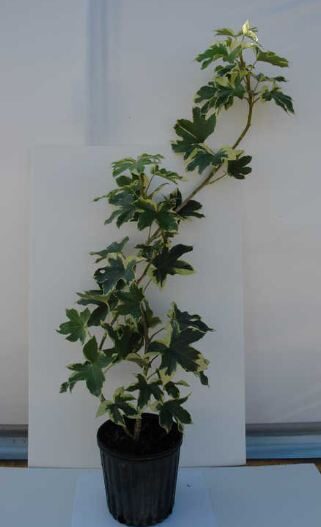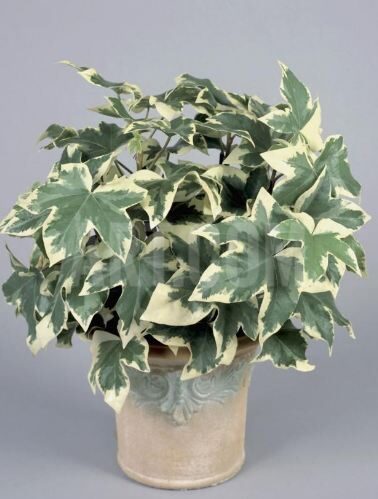06:01 This cross between two plants of different genera but the same family (known as a bigeneric hybrid) was raised by a French nursery just before World War I. Fatsia japonica ‘Moseri, the Japanese fatsia or aralia, was one parent and Hedera helix var. 
hibernica, Irish ivy, the other. The habit and shape of x Fatshedera lizei show the characteristics of both parents. The broad spread of the fatsia has been enlarged, and the stem of the ivy has been strengthened.
The leaves are shiny, with a tough leathery texture, and the ivy shape has been enlarged: leaves may be up to 5in/13cm wide.
From the ivy the plant has also inherited a partially climbing habit and so needs some form of support, such as a pole covered in spaghnum moss.
For the best effect, set three or four plants around the edge of a single pot. Indoor plants do not often flower.
Aphids may infest the soft growing tips.
Leaf loss is natural on older plants; if the plant becomes unattractive and leggy, take cuttings and Mealybugs and red spider mites may attack this plant; spray with insecticide and increase watering and humidity.  If conditions are too cool, shady, or damp, botrytis mold may affect the leaves. Remove any diseased leaves, spray with fungicide, and improve the growing conditions.
If conditions are too cool, shady, or damp, botrytis mold may affect the leaves. Remove any diseased leaves, spray with fungicide, and improve the growing conditions.
FACT FILE
ORIGIN Hybrid.
HEIGHT To 8ft/2.4m.
POTTING MIX Soil-based.
REPOTTING Each spring, move into a pot one size larger. Once the plant has reached maximum desired size, top-dress annually instead.
PROPAGATION Take 3-4-in/8-10-cm tip cuttings in spring or early summer.
KEEPING PLANTS Pinch off growing tips to encourage bushiness; prune in spring if necessary to restrict the plant s size. In summer put the plant outdoors in a sheltered spot, out of direct sunlight.

Fatshedera lizei Araliaceae house PLANT CARE
- Medium shade to bright filtered light; avoid extremes.
- Minimum winter temperature of 45°F/7°C, not above 60 F/16 C at other times.
- Keep the soil moist in the growing season, water less often in winter.
- Spray the leaves with water every other day.
- Feed with weak liquid fertilizer every 2 weeks in the period of active growth.
- Share
- Share
- Share
- Share
